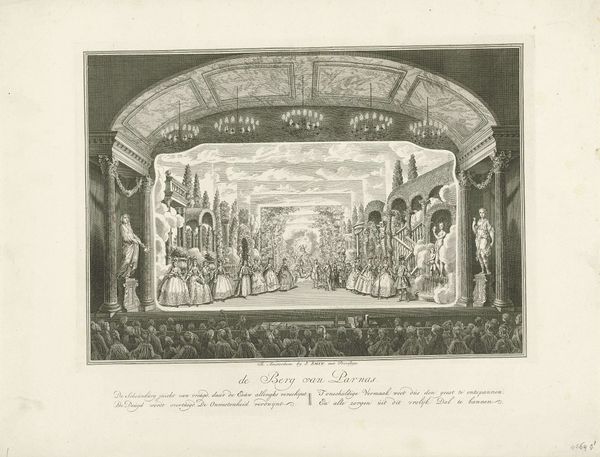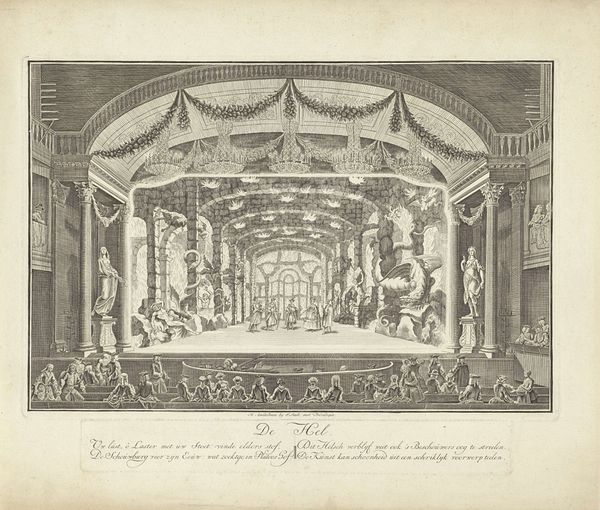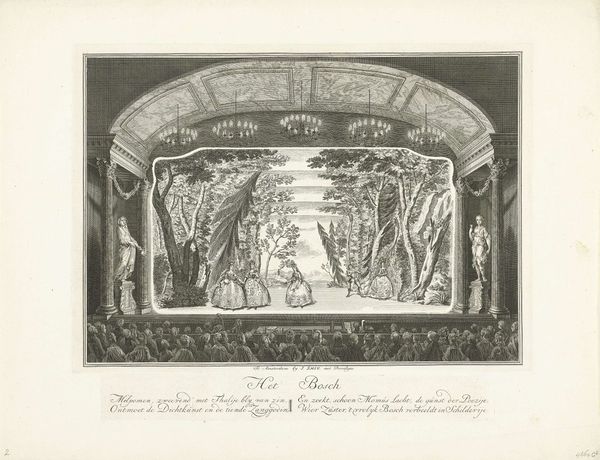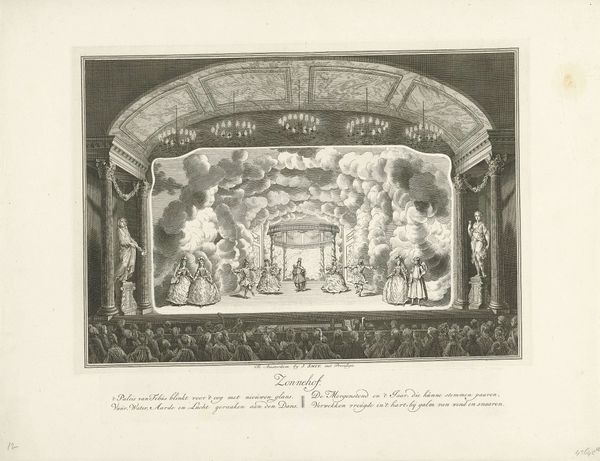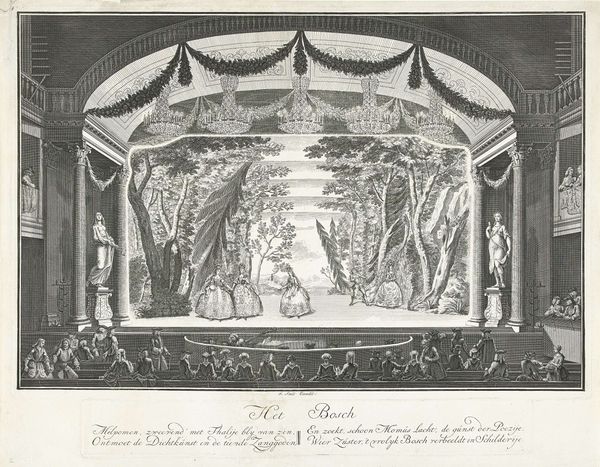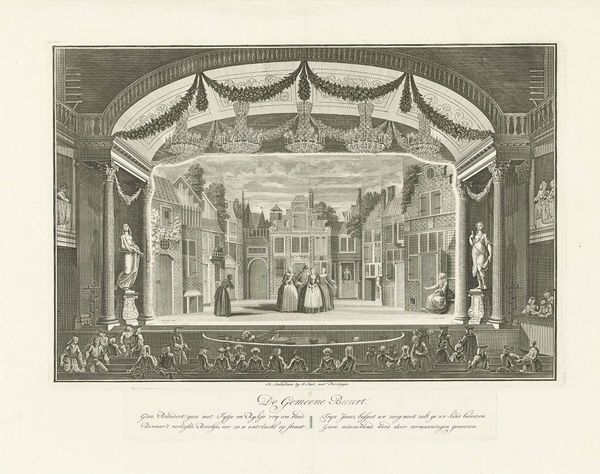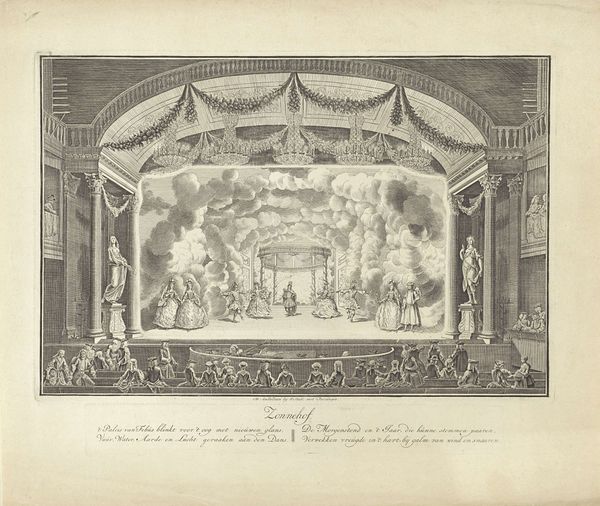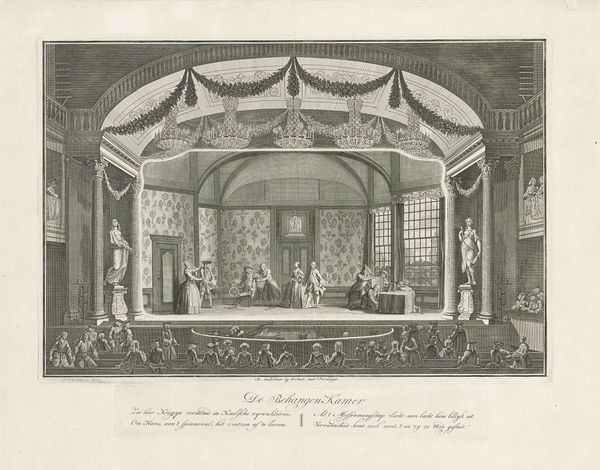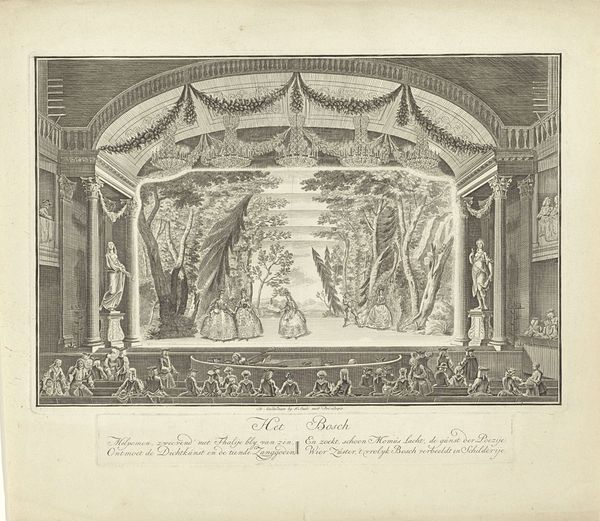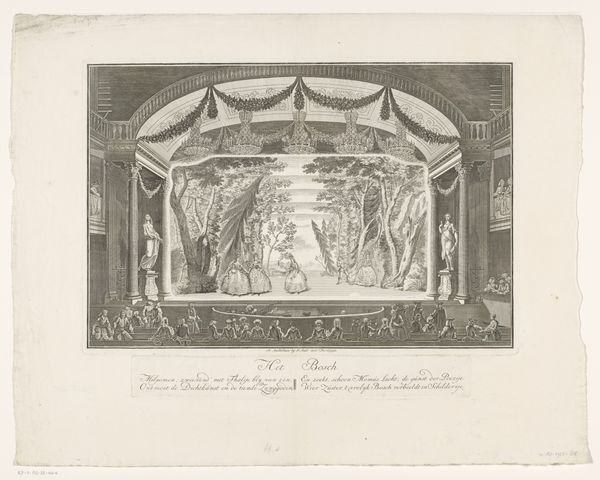
print, engraving
#
aged paper
#
light pencil work
#
baroque
# print
#
old engraving style
#
hand drawn type
#
cityscape
#
history-painting
#
engraving
Dimensions: height 417 mm, width 539 mm
Copyright: Rijks Museum: Open Domain
Editor: This is "Schouwburg met toneeldecor: De Hel" by Jan Punt, likely from between 1738 and 1772. It's an engraving. I'm struck by the dramatic perspective and the somewhat unsettling imagery. What kind of cultural context should I consider when looking at this? Curator: Well, this piece exists at the intersection of theater, visual arts, and social commentary. Jan Punt was documenting a stage set, and these sets weren't just decoration. "De Hel" – "Hell" – signals more than mere entertainment. How do you think the representation of Hell in a public theatre impacts its audience? Editor: I guess it depends on the audience. Was it supposed to scare people into being more religious or was it seen as simply a thrilling show? Curator: It's complex. Theatre was very public, and thus intertwined with the politics and morals of the time. Images of hell were common, and by visualizing these scenarios on stage, artists like Punt invited the public to consider the consequences of their actions and also provided some commentary. The engraver captured a slice of popular culture and the way morality was negotiated in public spaces. Think of the spectacle, the shared experience – it's a form of social control but also a space for catharsis. Notice the audience in the foreground. What do their expressions tell you? Editor: They are hard to read, honestly. It's more of a mass of faces, all pointed toward the stage. It is definitely powerful knowing they were meant to be implicated by the work. Were such politically-loaded depictions common for stage design during this period? Curator: Exactly! Stage design at this time became increasingly elaborate, competing with other art forms for visual impact and offering moral or political messaging. Editor: That really shifts how I see this. It's less about individual artistry and more about the social and political function of art. I will remember to keep socio-political forces in mind for future analyses! Curator: Precisely. The 'politics of imagery' indeed shape the public's imagination!
Comments
No comments
Be the first to comment and join the conversation on the ultimate creative platform.

